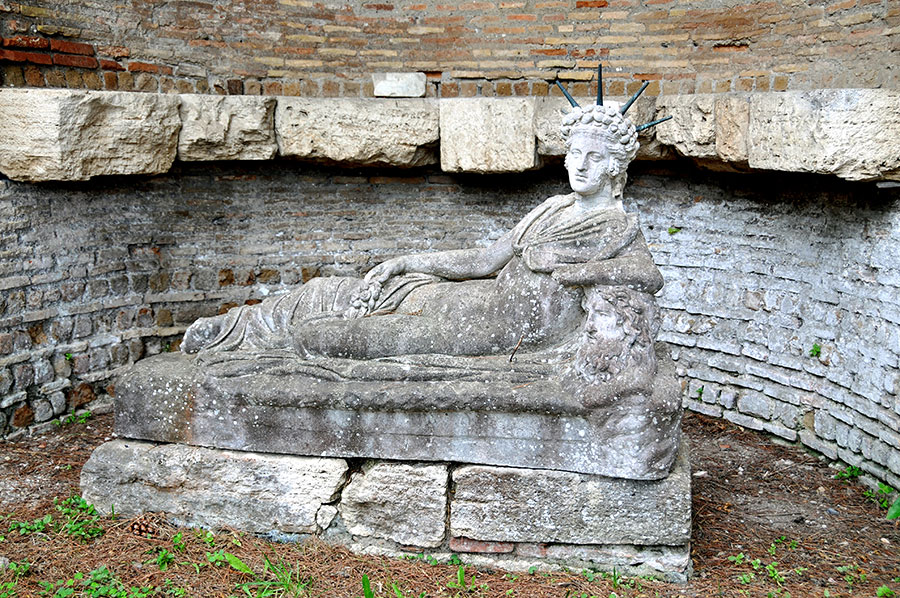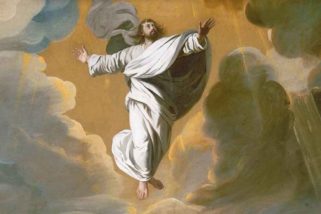In the same way many ancient Mediterranean societies told tales of gods born to virgins(some on December 25) before the time of Christ, the archetype of gods rising from the dead is likewise older than Christianity, an uncomfortable historical fact for many religious people but not necessarily unforeseeable given the power of human imagination and the long stretch of human history before the Common Era (or Anno Domini, A.D., if you prefer).
By Garrett Griffin
In human religion, gods often die and return to life, sometimes in their old form, sometimes in a new one (see All About Adam and Eve, Richard Gillooly, and Godless, Dan Barker). They also often came to earth disguised as mortals, especially in Greek and Hindu myths.
Dionysus was killed, descended into hell, and was reborn — in Zeus’ thigh of all places. Greek gods, goddesses, and mortals often descended into hell for various reasons and later rejoined the living. Demeter’s daughter, Persephone, descended into Hades and returned in the spring.
Attis, a Phrygian-Greek vegetation god born of the virgin Nana, castrated himself and, depending on the version, either bled to death from this or was hanged on a pine tree. He was reborn after three days, his blood redeeming the earth as it fell from his body. His worshipers celebrated the salvation from death offered to them by Attis by decorating a pine tree each spring.
This took place on March 25, a date later used by Christians for the Easter celebration (while no longer used for Easter, Catholics still use it to celebrate the Feast of Annunciation of the Blessed Virgin Mary).
In Egypt, Osiris died, was resurrected, and ascended into heaven. Horus came back from the dead. Like many gods related to vegetation, Adonis, worshiped in Babylonia and Syria as early as the 7th century B.C., died annually (in the fall) and was resurrected (in the spring). In Greece, Heracles was mortal but rose into heaven to take his place among the gods just before he died.
In Hindu mythology, Shiva cut off Ganesha’s head but Pavarti convinced him to bring the god back to life. Krishna is accidentally killed by a hunter, but comes back to life and ascends into heaven. The Sumerian king Tammuz was killed but resurrected by the gods and made a god himself. According to the Mesoamerican people, Quetzalcoatl killed himself, but after a few days in the underworld returned to heaven.
Then there’s Mithra, made the “Protector of the Empire” by the Romans in 307 AD, right before Christianity was declared the official religion, but actually a Person god worshipped before 200 B.C. Some versions of Mithra’s story make him the son of a human virgin. His birth, on December 25, was seen by shepherds and Magi, who brought gifts to a cave, the place of his birth. He performed miracles like raising the dead and healing the sick and blind; he had 12 disciples, representing the zodiac; he died, was put in a tomb, and ascended into heaven; the spring equinox was when worshipers celebrated his ascension. Believers predicted that in the Last Days, the battle between good and evil would consume the earth. The righteous would be saved, the wicked would go to hell (see Barker).
Just as the winter solstice inspired the celebration of the birth of many gods and demi-gods in the northern hemisphere, the spring equinox saw feasts for countless deities around the world. Some cultures in the Middle East made it the start of their new year. During the two days of the spring equinox, day and night are the same length. The Council of Nicaea in 325 decided Christ’s resurrection would be celebrated on the first Sunday after the first full moon after (or on) the spring equinox.
Interestingly, the ancient Saxons had long celebrated a feast day for Eostre (a goddess stolen from Germanic peoples, originally Ostara) on the first full moon after the spring equinox. Eostre allegedly saved a wounded bird by turning it into a hare, a hare that continued to lay eggs, which it decorated and presented to Eostre. Both “Eostre” and “easter” are derived from an ancient word for “spring”: eastre.
Many other related religious ideas, such as sacrifice, communion, and baptism, pre-date Judaism and Christianity.
The notion that sacrificing one human being to the gods to benefit or save others is an ancient and common belief, expressed most horrifically in Mexico, India, and elsewhere. Sacrificing animals and first-born children were practices among the ancient Hebrews but also groups in Australia, China, the Americas, Africa, and Russia.
This was done to atone for sins, nourish the gods, or bribe them for a good harvest, victory in battle, and so on. Many cultures believed they could transfer evil or sin to other people or animals and then eradicate it by putting the victim to death. “In certain African tribes, monkeys or rats were paraded through the village to attract evil spirits and then crucified to save the entire community from demonic attacks” (Gillooly) and the Aztecs thought sacrificing a man-god would take away their sins against the deities.
Jews transferred sins to goats, hence the modern term “scapegoat.”
Transubstantiation, the belief that food or drink can be converted to or can represent the flesh and blood of a person or god, is likewise very old. People often tried to eat the gods, in order to take on the characteristics and strengths of divine beings. Followers ofAttis “ate” his body in the form of bread. The Creek and Seminole Indians believed corn was the manifestation of the corn god. The Aztecs ate bread, which they believed became the body of Huitzilopochtli or Vitzilipuztli. The people of Crete thought Dionysus became a bull, so at their ceremonies they would eat a bull live and drink its blood.
There were many groups around the world that ate their human sacrifices as well, and some who believed that by eating a man-god they could receive his divine nature.
Baptism by water, spit, or blood was thought by the ancients to wash away evil spirits, guilt, and sin, and has taken place in many societies. The Romans would huddle under a platform and would be renatus in aeternum (“born again for eternity”) en masse when a bull above them was killed and blood rained down. The Aztecs were baptized in water, as were the Indians in the Ganges River. Many peoples baptized their babies with spit or water to protect them from evil spirits or to free them from sin.
It is also important to note the idea of original sin, or primal sin, inspired communion, sacrifice, and baptism in many pre-Jewish cultures. It wasn’t all about appeasing bloodthirsty gods or warding off demons. The Aztecs believed sin was inherited, that it existed before the creation of the world; the ancient Greeks, beginning with the cult of Orpheus, believed humans were innately evil and that the soul had to be cleansed.
Garrett S. Griffin is a political writer for Weekend Collective and the author of Racism in Kansas City: A Short History. A former religious conservative, he is now an atheist and a member of the Democratic Socialists of America. Follow him @garrettsgriffin.




